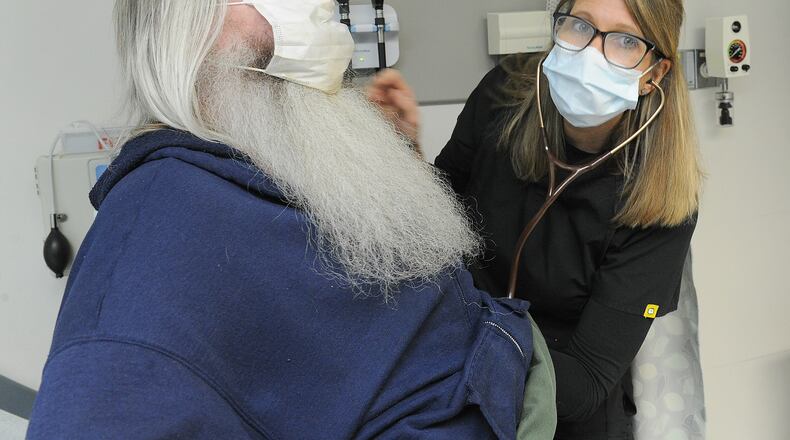“Here, at the base we have a combination, a varied demographic,” said Kelly Grigsby, a registered nurse at the VA clinic. “We are managing long-term chronic diseases, and we also have a wealth of patients who are extremely healthy and only have to check in with us once or twice a year.”
The history of the Dayton VA Medical Center at 4100 W. Third St., about 17 miles from Wright-Patterson, stretches back to just after the Civil War. Wright-Patterson itself traces its history back to the Wright Brothers’ refinement of piloted flight on Huffman Prairie in 1904 and 1905.
The VA clinic on base opened in January 2020, some two months before the COVID-19 pandemic led to stay-at-home orders and business shutdowns.
It is somewhat unusual to have a VA clinic on a military installation, although it’s not unheard of, said Mark Murdock, director of the Dayton VA. Travis Air Force Base in California has made strides in the same direction, he said.
“We have a certain number of veterans who are dually eligible for both VA care and for care through Tricare (the health insurance for active-duty military and retirees) through here, right here at Wright-Patt Medical Center,” Murdock said.
At the base clinic, VA caregivers can provide primary care, with Air Force specialists close by, although those involved cautioned that patients should not expect to move instantly from primary care to specialist care. But scheduling and the process to work through are near at hand.
“It is much easier,” said Col. Christian Lyons, commander of the 88th Medical Group at Wright-Patterson.
“Truly, a win-win, we believe, for all of us,” Murdock said.
Many military retirees can find themselves eligible for both VA care and continued Tricare coverage, Lyons said.
“We want to target those people who are dual-eligible,” said Lyons, referring to people eligible for care at both the VA and Wright-Patterson Medical Center.
“We do a lot of problem-solving together as a team, to find out how we can best take care of the needs of veterans,” the colonel said.
This program, which evolved before Lyons arrived at Wright-Patterson, is an example of just that, he said.
Today, the on-base VA clinic consists of about eight people, called Patient Aligned Care Teams. Two teams each include a health care practitioner, a registered nurse, a licensed practical nurse and an administrator.
Both Lyons and Murdock emphasized that the clinic has capacity for additional patients. If veterans want to find out if they are eligible for care at the clinic, they are invited to call the Dayton VA at 937-268-6511, ext. 4105.
Today, about 558 patients are enrolled for care in the clinic, with room for more. Murdock believes close to 3,000 veterans in the area may be eligible, and he wants the number of patients to rise.
“One of the things we want to do is make sure we get the word out for veterans to know that they’re eligible,” he said.
About the Author



